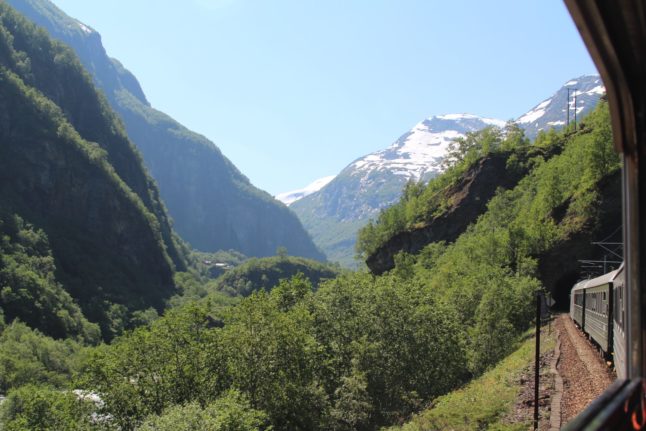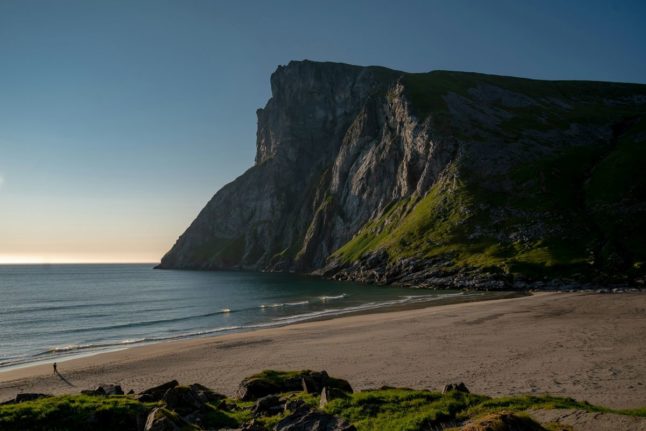Some of the best Norway has to offer can be seen sitting down from the comfort of train seats. Much of the country’s rail system is draped around stunning scenery, giving passengers close-up views not possible when flying or driving.
Such is the beauty of the country’s railway lines, it’s no surprise that a number of different routes are featured on lists of the world’s most scenic train journeys.
With summer on the horizon, we’ve compiled a list of some of the best to take a trip on this summer.
The Bergen Line
One of the busiest and most popular of Norway’s railway lines, the Bergenbannen acts as a greatest hits of Norway’s landscape. The line which connects Oslo in the east to Bergen in the west makes its way through mountains, valleys, fields, fjords and forests.
The first leg of the trip from Oslo to Geilo passes through mountain scenery before ascending to Finse and passing along the Hardangerjøkulen glacier.
There is also plenty of connections to other great train journeys. A popular transfer is to Myrdal station, where you can take the iconic Flåm Line.
Film buffs and Sci-Fi nerds alike may want to make the pilgrimage to Finse, which was the filming location for the ice planet of Hoth in Star Wars.
Vy is the rail operator which runs trains on the line. You can book tickets for the seven-hour journey here.
Word to the wise, tickets for this train can cost a lot if you leave it late- so be sure to book in advance.
The Flåm Line
Famous for the green locomotives which operate on the line, the Flåm Line is the perfect trip for those who like to keep things short and sweet as it is just over an hour long.
One of the steepest railway lines in the world, around 500,000 passengers take the hour-long train ride from Myrdal to the village of Flåm, located on the interior of the Aurlandsfjord, each year.
For those with a keener interest in trains, the Flåm Line is also a technical marvel. For starters, there is an elevation change of 866 metres on the journey. Secondly, two locomotives are required to get passengers to their location- one at the front and one at the back. And for those who like to dive into details, each carriage has its own specialised braking system.
If you prefer nature to the mechanics, there is plenty for you. The journey takes you along mountainsides and passes the Kjosfossen waterfall. The train stops at the waterfall so people can enjoy the views, get some fresh air, and take pictures.
Compared to other trains on this less, the interior of the carriages is a lot more retro and a lot less modern, which will add to the charm for many travellers. You can book tickets here.
Rauma Line
High peaks, jagged rocks and windswept plateaus are all things the Rauma Line has in abundance. The 114-kilometre-long journey is stunning all year round. The trip will see you cut through the Romsdal valley, speed past the river with which the line shares its name, and cross the impressive Kylling Bridge.
Until recently, this train was more of a hidden gem than the more famous Flåm and Bergen lines.
This line doesn’t have as many departures as some others on this list, so it’s better to book in advance and plan the trip accordingly.
Like the Flåmsbana, the journey is brisk at 1 hour and 40 minutes. Tickets are booked with SJ Nord.
The Norland Line
Nearly as impressive in length as it is in scenery, the Nordland Line connects central Norway with Bodø in the north.
Even though the 11-hour trip will take you to Hell (the town), the journey should be a fantastic experience overall.
Summer is the best time of year to make the journey as due to the long days and midnight sun, once you cross the Arctic Circle, very little of the landscape will be lost to darkness.
However, there are only two departures per day, and one of them is a night train. However, the night train may be better in the winter due to the prospect of being able to spy the northern lights.
The Nordland Line boasts the title of being the only train in Norway to cross in and out of the Arctic Circle.
Trains start in the forests and farmland of Trondelag before crossing the Saltfjellet mountain range and meandering along the Arctic coast.
The Røros Line
Norway’s most historical line, opening in 1877, connects Hamar in southeast Norway with Støren. The line is easily accessible from both Oslo and Trondheim.
The scenery will feel more rugged and remote than other train lines, but the train will also pass through the forests of Østerdalen, and passengers may be able to spot moose, bears and lynxes.
History lovers can disembark at the UNESCO-listed mining town of Røros. SJ Nord operates the route.



 Please whitelist us to continue reading.
Please whitelist us to continue reading.
Member comments